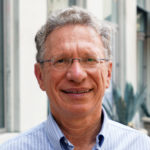
Charles Reed, CSU Chancellor
The announcement that California State University chancellor Charles Reed will be stepping down after 14 years at the helm comes against the backdrop of extraordinary changes in the top leadership of the 417,000 student system.
Since January 2011, CSU has filled vacancies or will have to fill them because of the departures or pending departures of 12 presidents of the 23 campus system, according to the Chronicle of Higher Education.
In an interview earlier this month, Claudia Keith, a CSU spokesperson, said that the system had enjoyed a long period of leadership stability but that “it is very unusual to have so many vacancies and so much movement at the president level.”
The head of the CSU system is called chancellor, while presidents run each of the campuses. This year alone, the system had multiple presidential searches underway, including at San Francisco State, Cal State San Bernardino and the California Maritime Academy, and made several new appointments. This spring it announced the appointment of new presidents at Cal State Fullerton (Mildred Garcia) and Cal State Northridge (Dianne Harrison). Just this month, Leslie Wong was named to succeed long-time San Francisco State president Robert Corrigan and Tomas Morales was appointed president at CSU San Bernardino.
Earlier this year, Leroy Morishita, after a stint as interim president, became president of Cal State East Bay. Last year, Jeffrey Armstrong became president Cal Poly San Luis Obispo and Elliot Hirshman took over at San Diego State. A search is underway for a permanent replacement for Hamid Shirvani, the president of Cal State Stanislaus, who left to become head of the university system in North Dakota. Joseph Sheley will take over there as interim president next month.
Keith said the retirements and resignations had less to do with the state’s budget crisis, and more to do with fact that many of those resigning were reaching retirement age. She said the average age of CSU’s presidents was 64. “We have some long-serving presidents who have been there a long time,” she said.
That is certainly the case at CSU San Bernadino where President Albert Karnig told EdSource that reaching retirement age was the reason he will be leaving after 15 years as president, and not the impact of he state’s budget problems. “Lots of institutions have challenges,” said Karnig who turned 70 last month.
Whatever the reasons, the transitions come at arguably the most difficult period since the founding of the CSU system. During Reed’s tenure, CSU has been at the receiving end of deep budget cuts. It has also raised fees repeatedly, which has made Reed a target of student protests and unhappiness. Just this month, students from several Southern California campuses went on a hunger strike to protest cuts in programs, higher fees and salaries paid to incoming university presidents.
The impact of multiple changes in leadership on CSU is impossible to predict. Bringing in new leadership could provide renewed energy—and ideas—for coping with the multiple challenges facing CSU and its individual campuses. It could also mark a period of uncertainty in CSU’s relationships with the Legislature and other key higher education constituencies in the state, at just the time when higher education faces the prospect of even more budget cuts.
To get more reports like this one, click here to sign up for EdSource’s no-cost daily email on latest developments in education.











